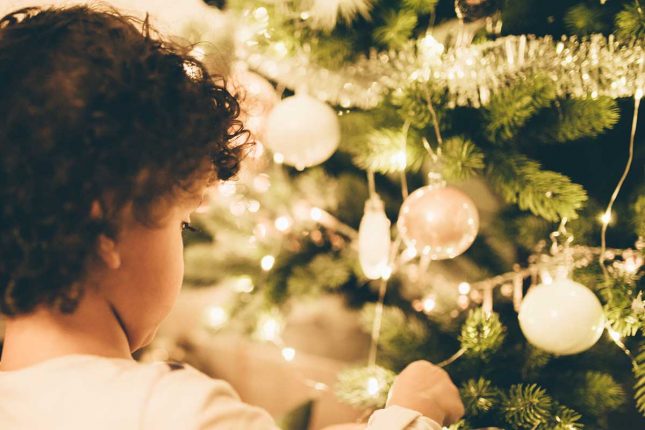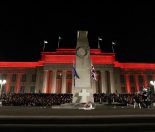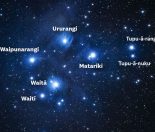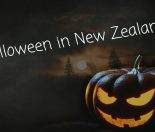Christmas in New Zealand is celebrated on 25 December, which is summer in the Southern Hemisphere – this makes a lot of what we experience over our festive season quite different to other parts of the world.
What do different nations celebrate over Christmas, and what are some of the common symbols of the festive season? All of this and more is explored here in our article about the history, symbols and celebrations of Christmas.
Earliest traces of a midwinter celebration
There’s good evidence to suggest that the vikings invented Christmas.
For centuries, there has been a celebration amongst Scandinavians and Europeans of the winter solstice – the point during winter when the coldest months were over and days were soon to get warmer and brighter. This was often towards the end of December and into January. Traditionally families would go out and retrieve a ‘yule log’ – which is often recreated in chocolate-form during Christmas feasts today.
The burning of the yule log would signify a time of feast and celebration – eating and drinking would often continue until the log had finished burning. This celebration would last for 12 days. The pagan vikings would also dress evergreen pine trees with symbols and offerings of the Gods. The evergreen trees were a great symbol of life, and the forthcoming summer.
The Northern Hemisphere celebrates Christmas midwinter – with warming feasts and hot chocolate; building snowmen and huddling by the fire. But these symbols don’t represent the reality for us, but a lot New Zealanders do plan a midwinter Christmas celebration in June or July. Just to enjoy some midwinter mulled-wine frivolity!
The Nativity

The gospel (or ‘good news’) accounts of The Nativity can be found in Matthew and Luke in the New Testament. The gospels depict many Christmas symbols we are familiar with: the Christmas star, angel, donkey, baby in a manger, shepherds, wise men and great celebration that the Saviour was born. Many Christian homes will have a nativity scene on display over the festive season. The Nativity story is reinacted by children during Advent celebrations in Christian nations throughout the world. Advent is the period of the Church calendar that runs for four Sundays before Christmas Day. Many churches light a candle each Sunday of Advent, and the candles are displayed in another common Christmas symbol: the wreath. A final candle is often lit during a Christmas Day service.
Santa Claus
What we know as Santa today is the culmination of many stories, true and false, that have been passed through generations.
Santa is sometimes referred to as ‘Jolly Ol’ St Nick’, which is a reference to St Nicholas – a wealthy Catholic priest who was born in 280AD. He is said to have travelled around, dropping gifts in the shoes or socks (stockings) of those less wealthy. The Dutch name for St Nicholas is Sinterklaas, which in English, has become Santa Claus.
Our jolly Santa with a large belly, red suit and hat and white beard is an image not unlike the way Sinterklaas has always been depicted. However, modern Santa has been heavily influenced by marketing campaigns as the commercial side of Christmas has grown.
Santa Claus is now is associated with the North Pole, travelling down chimneys, reindeer pulling a sleigh packed with toys and working with a band of small Elves to prepare Christmas gifts for children worldwide. All of these aspects have formed over time, and many are reinforced by the popular poem ‘The Night Before Christmas’ – first published anonymously in 1823 and now recreated in book form, which is read and loved by children as a tradition on Christmas Eve. Is Santa Claus real, check out our article to find out.
Dressing the tree

Trees have been associated with Christmas since the 16th Century, and nowadays many cities around the world decorate a public Christmas tree in a central city location as a symbol of togetherness and community.
Celebrations around the world

- In Russia, Christmas Eve is celebrated by dining in a meatless dinner – usually featuring a special porridge called kutya.
- Children in China wait for Sheng dan lao ren ‘Old Christmas Man’, who is the Chinese version of Santa Claus.
- Traditionally in Poland, to begin the Christmas Eve meal a large wafer biscuit is passed around called an ‘Oplatek’, which has a picture of Mary, Joseph and Jesus on it. Everyone breaks a piece off and eats it.
- In many parts of Romania, someone puts on a coloured mask and dresses up as a goat called the ‘Capra’, travelling round town with carol singers – jumping and dancing while they sing.
- Mango or banana trees are often decorated in India as their Christmas trees.
- Chicken is an expensive meat in Zimbabwe, and is often served as the centre of their Christmas feasts.
- In Danish, Merry Christmas is ‘Glædelig Jul’.
We also have articles on the Tradition of christmas as well as Creating your own family traditions and heaps of articles on dealing with pressure at Christmas time, as well as Christmas inspired gifts and recipes.









Hi hate this site
OK, thanks for stopping by. Feel free to leave us any useful ideas about how we can improve the site for you. But if you just hate it, I’m not sure we can help. — Kiwi Families
Nice!
Cool!
Seeing that it’s summer, you will just have to adjust the songs and have Santa owning two homes and two toy producing centers for each half of the world! I’d say he lives in the South Pole also seeing it’s even colder! Then again, it’s summer everywhere else down there so maybe a small island like Christmas Island? One thing I’ve learned is that you don’t miss what you never knew! Like a white Christmas and such! In many ways, it would be allot better not having snow, freezing as you spend countless hours shopping, and so many other opportunities… Read more »
Yea, it certainly makes for a different Christmas down here. Especially when we all head down to the beach for a swim after opening our Chrissy presents! I’m fairly sure Santa has it all sorted out though. He starts off here in a singlet and jandels, and puts on his wooly coat as he heads further North during the night! — Jarrod